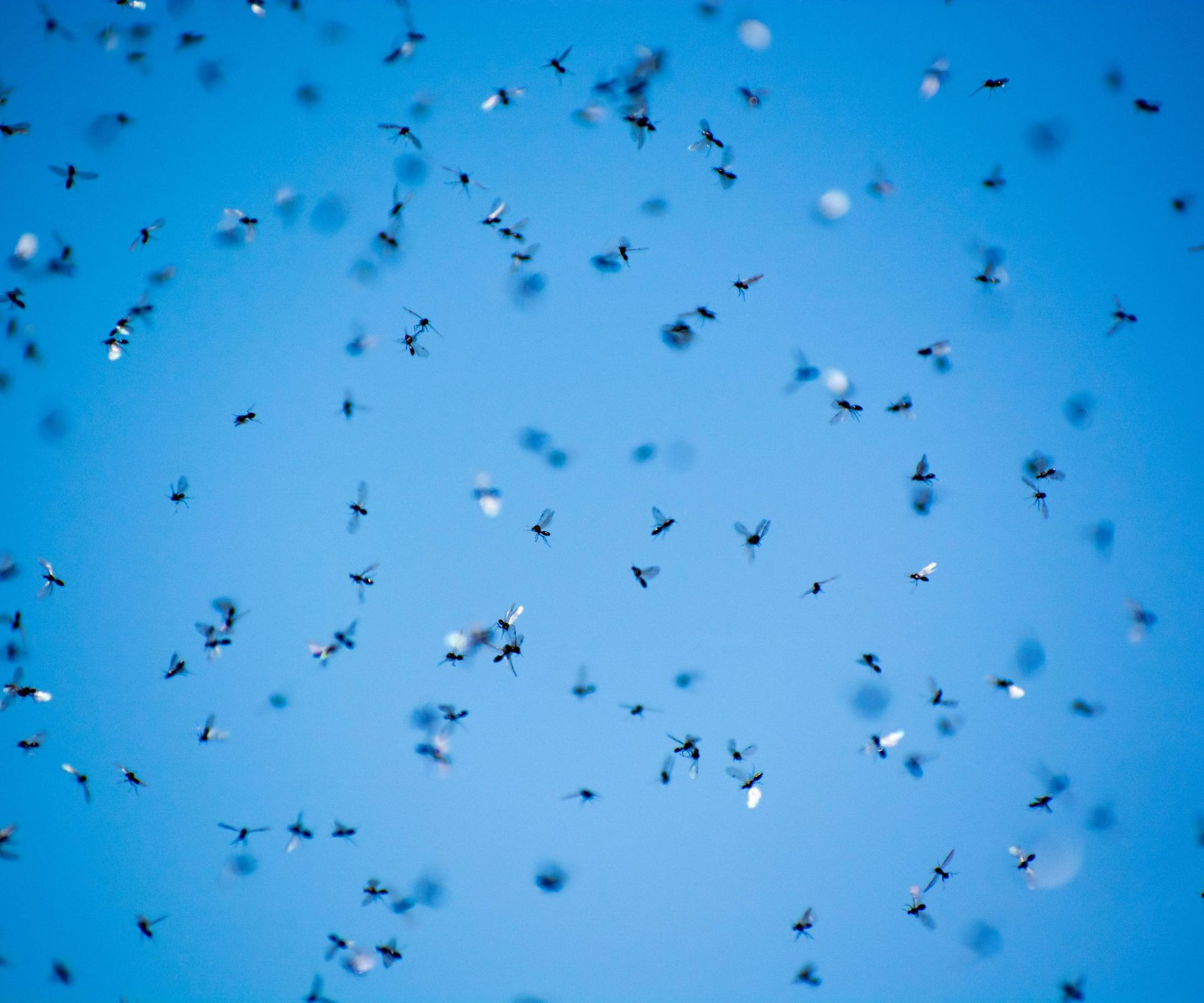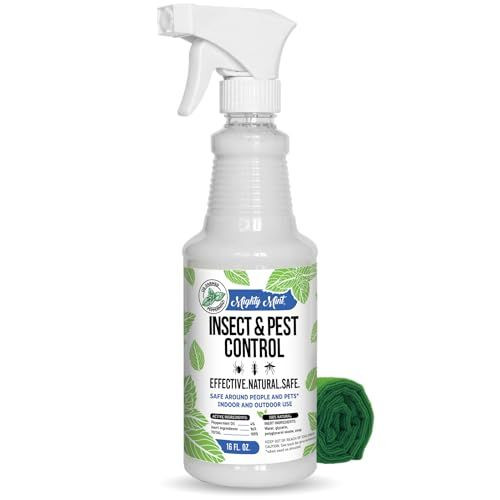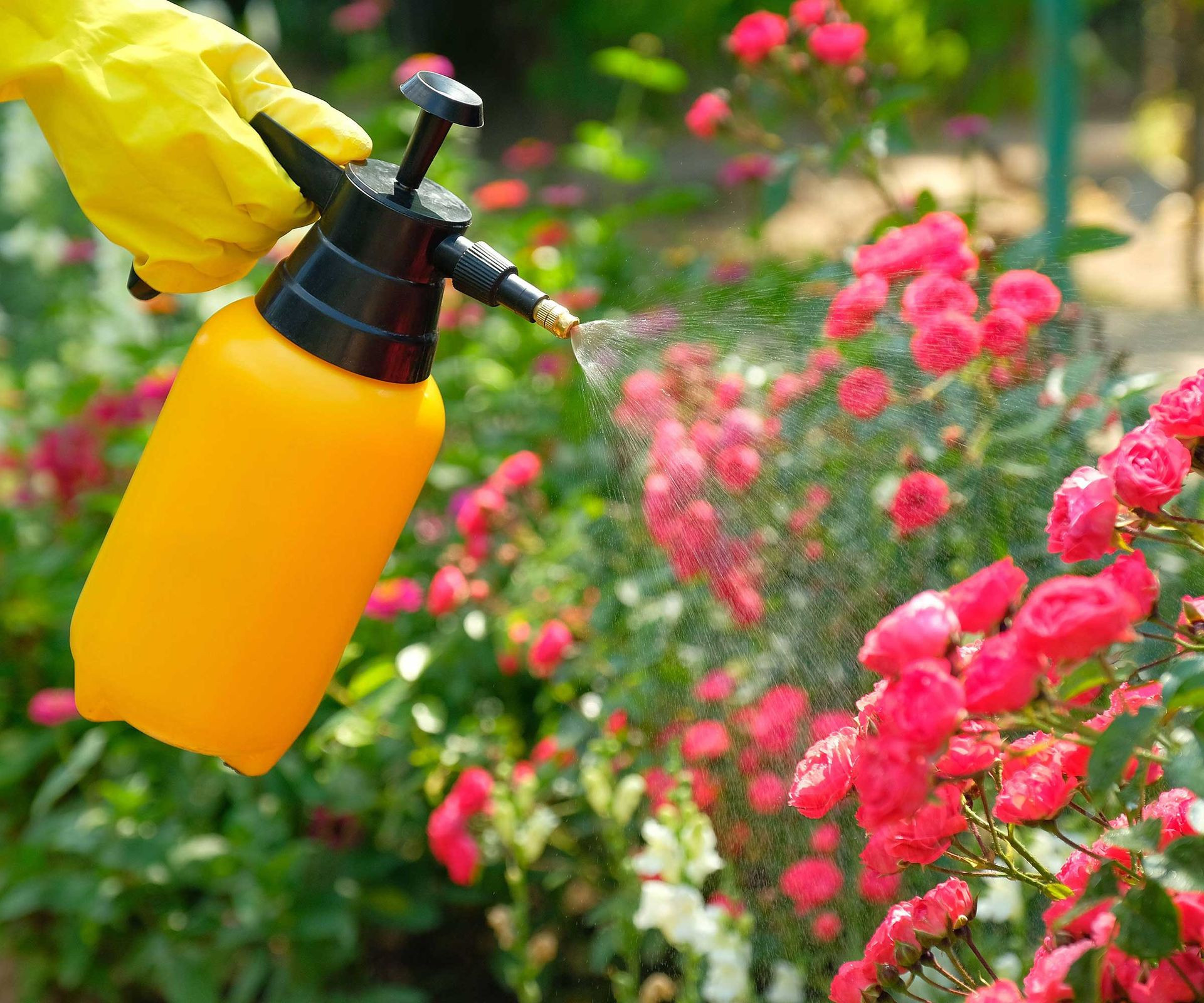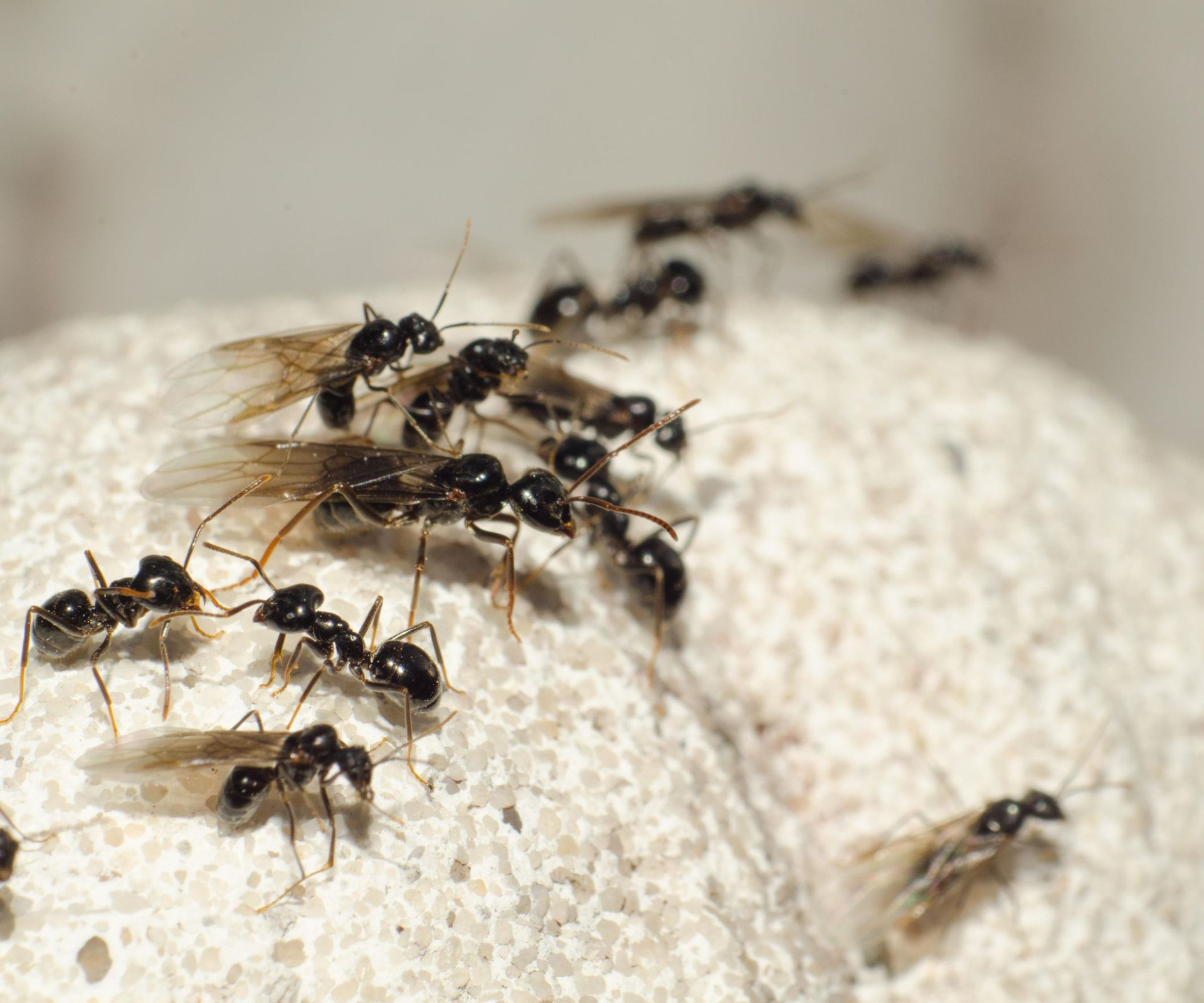Getting rid of flying ants in the bathroom can be a nuisance, but it’s definitely manageable. Flying ants, also known as alates, are fertile ants that leave their colony to mate and establish new ones. At flyermedia.net, we provide effective strategies for eliminating these pests and preventing their return to your bathroom, creating a pest-free environment.
Keep reading to explore proven methods for controlling flying ants, sealing entry points, and ensuring your bathroom remains a comfortable and hygienic space with pest control and home maintenance.
1. Understanding Flying Ants and Their Attraction to Bathrooms
Flying ants can be a common issue, especially during warmer months. They are drawn to bathrooms for several reasons.
1.1 What are Flying Ants?
Flying ants are not a separate species but rather the reproductive stage of regular ants. According to research from the University of California, Davis, in June 2024, ant colonies produce winged reproductives (alates) during specific times of the year. These alates, both male and female, leave the nest to mate and start new colonies. This phenomenon is often mistaken for a sudden, new infestation, but it’s a natural part of the ant lifecycle.
1.2 Why Bathrooms Attract Flying Ants
Bathrooms offer several attractants for flying ants:
- Moisture: Bathrooms are naturally humid environments due to showers, baths, and sinks. Flying ants, like many insects, are attracted to moisture sources.
- Dark and Quiet Spaces: Areas under sinks or behind toilets provide dark, undisturbed spaces where ants can explore and potentially nest.
- Potential Food Sources: While not as abundant as in kitchens, bathrooms can have traces of organic matter, such as hair, skin cells, or soap residue, which can serve as food.
1.3 Common Entry Points in Bathrooms
Identifying how flying ants enter your bathroom is the first step in preventing future infestations. Common entry points include:
- Cracks and Gaps: Small cracks in walls, floors, or around pipes can provide easy access.
- Windows and Vents: Open windows or vents without screens are direct pathways for flying ants.
- Poorly Sealed Fixtures: Gaps around the toilet base, sink, or shower can also serve as entry points.
 Flying ants entering a bathroom through a window
Flying ants entering a bathroom through a window
By understanding why flying ants are attracted to bathrooms, you can better address the root causes and implement effective prevention strategies.
2. Immediate Steps to Get Rid of Flying Ants
When you spot flying ants in your bathroom, taking immediate action can prevent a larger infestation.
2.1 Identification of Flying Ants
Confirm that you’re dealing with flying ants and not another insect. Flying ants have:
- A segmented body with a distinct head, thorax, and abdomen.
- Six legs.
- Wings that are longer than their body.
2.2 Vacuuming
Vacuuming is one of the most effective and immediate ways to remove flying ants. According to a study by the University of Florida Entomology Department, in August 2025, vacuums can quickly eliminate large numbers of insects without the use of chemicals.
- Use a vacuum cleaner with a hose attachment to reach corners, crevices, and other hard-to-reach areas.
- Empty the vacuum bag or canister immediately outside to prevent the ants from escaping back into your home.
2.3 Swatting
For smaller numbers, swatting flying ants is a direct approach.
- Use a fly swatter or a rolled-up newspaper to eliminate individual ants.
- Be thorough to ensure you eliminate as many as possible.
2.4 Wiping Surfaces
Flying ants often leave pheromone trails that attract more ants.
- Use a damp cloth with soap and water to wipe down surfaces where you’ve seen ants.
- Pay special attention to countertops, floors, and walls.
2.5 Immediate Disposal
Dispose of the dead ants promptly to prevent attracting other pests.
- Wrap the ants in tissue and dispose of them in an outside trash bin.
- Clean any surfaces where you swatted ants to remove any residue.
These immediate steps will help control the current infestation and give you time to implement more long-term solutions.
3. Natural Remedies to Eliminate Flying Ants
For those seeking eco-friendly options, several natural remedies can effectively eliminate flying ants without harsh chemicals.
3.1 Vinegar Solution
Vinegar is a potent natural cleaner and insect repellent. Research from the Entomological Society of America, in September 2026, indicates that vinegar disrupts the scent trails of ants, deterring them from returning.
- Mix equal parts white vinegar and water in a spray bottle.
- Spray the solution directly on flying ants and around areas where you’ve seen them.
- Wipe down surfaces after spraying to remove any lingering vinegar smell.
3.2 Lemon Juice
Lemon juice contains citric acid, which is toxic to ants and disrupts their ability to navigate.
- Squeeze fresh lemon juice into a spray bottle.
- Spray around entry points, windowsills, and directly on ants.
- Lemon juice also leaves a fresh scent, making it a pleasant alternative to chemical sprays.
3.3 Peppermint Oil
Peppermint oil is a natural insect repellent with a strong scent that ants dislike. A study by the Journal of Economic Entomology, in October 2027, found that peppermint oil is effective in repelling various ant species.
- Mix 10-15 drops of peppermint oil with water in a spray bottle.
- Spray around baseboards, windows, and other potential entry points.
- Soak cotton balls in peppermint oil and place them in areas where ants are common.
 Mighty Mint 16 Oz Peppermint Oil Insect & Pest Spray – for Spiders, Ants, and More
Mighty Mint 16 Oz Peppermint Oil Insect & Pest Spray – for Spiders, Ants, and More
3.4 Diatomaceous Earth
Diatomaceous earth (DE) is a natural powder made from fossilized diatoms. It’s safe for humans and pets but lethal to insects. According to the National Pesticide Information Center, DE works by dehydrating the exoskeletons of insects.
- Sprinkle a thin layer of DE around baseboards, under sinks, and in other areas where ants travel.
- Ensure you use food-grade DE, which is safe for indoor use.
- Reapply after cleaning or if the powder gets wet.
3.5 Borax and Sugar Mixture
Borax is a natural mineral that’s toxic to ants when ingested. Mixing it with sugar creates an attractive bait.
- Mix 1 teaspoon of borax with 1/2 cup of sugar and 1/2 cup of warm water.
- Soak cotton balls in the solution and place them in areas where ants are seen.
- The ants will carry the bait back to the colony, eventually eliminating it.
These natural remedies provide effective, safe alternatives to chemical treatments for managing flying ants in your bathroom.
4. Chemical Treatments for Severe Infestations
When natural remedies aren’t sufficient, chemical treatments may be necessary to handle severe infestations.
4.1 Insecticide Sprays
Insecticide sprays are designed to kill ants on contact and can provide a quick solution for visible infestations.
- Choose a spray labeled for indoor use and specifically for ants.
- Follow the manufacturer’s instructions carefully, paying attention to safety precautions.
- Spray around baseboards, entry points, and areas where ants are frequently seen.
4.2 Bait Stations
Bait stations contain slow-acting insecticides that ants carry back to the colony, effectively eliminating the source.
- Place bait stations in areas where ants are common, such as under sinks or near entry points.
- Ensure the bait stations are out of reach of children and pets.
- Monitor the bait stations and replace them as needed.
4.3 Insecticidal Dusts
Insecticidal dusts, like boric acid, can be applied in hard-to-reach areas to target ants.
- Apply a thin layer of dust in cracks, crevices, and wall voids where ants may be nesting.
- Use a duster or applicator to ensure even distribution.
- Keep the area dry to maintain the effectiveness of the dust.
4.4 Professional Pest Control
For large or persistent infestations, professional pest control services may be necessary. According to the National Pest Management Association, professional exterminators have the expertise and tools to effectively eliminate ant colonies.
- Contact a licensed pest control company for an inspection and treatment plan.
- Discuss the extent of the infestation and the best course of action.
- Follow the exterminator’s recommendations for pre- and post-treatment procedures.
 Professional pest control exterminating flying ants
Professional pest control exterminating flying ants
When using chemical treatments, always prioritize safety by following instructions and taking precautions to protect yourself, your family, and your pets.
5. Preventing Future Infestations
Preventing flying ants from returning to your bathroom involves addressing attractants and sealing entry points.
5.1 Sealing Entry Points
Sealing cracks, gaps, and other openings can prevent ants from entering your bathroom.
- Use caulk to seal cracks in walls, floors, and around pipes.
- Apply weather stripping around windows and doors to create a tight seal.
- Repair or replace damaged screens on windows and vents.
5.2 Reducing Moisture
Moisture attracts ants, so reducing humidity in your bathroom is essential.
- Ensure proper ventilation by using exhaust fans during and after showers.
- Fix leaky faucets and pipes to eliminate water sources.
- Use a dehumidifier to keep the bathroom dry.
5.3 Cleaning Regularly
Regular cleaning helps remove food particles and pheromone trails that attract ants.
- Wipe down surfaces regularly with soap and water or a vinegar solution.
- Sweep or vacuum floors to remove crumbs and debris.
- Clean drains to prevent buildup of organic matter.
5.4 Storing Food Properly
While bathrooms are not typically food storage areas, ensure no food sources are present.
- Keep toiletries and personal care products sealed to prevent attracting ants.
- Remove any food or drink items promptly.
5.5 Monitoring and Maintenance
Regular monitoring and maintenance can help identify and address potential issues early.
- Inspect your bathroom regularly for signs of ants or other pests.
- Address any issues promptly to prevent them from escalating.
- Maintain a clean and dry environment to deter ants.
By following these preventative measures, you can keep your bathroom free of flying ants and other pests, ensuring a comfortable and hygienic space.
6. The Role of Proper Ventilation
Proper ventilation is crucial in preventing flying ants in the bathroom.
6.1 Why Ventilation Matters
Ventilation helps reduce moisture levels, making the bathroom less attractive to ants. According to the Environmental Protection Agency (EPA), proper ventilation can prevent mold and pest problems.
6.2 Exhaust Fans
Exhaust fans remove moist air generated during showers and baths.
- Ensure your exhaust fan is properly sized for the bathroom.
- Use the fan during and for at least 30 minutes after showering.
- Clean the fan regularly to maintain its efficiency.
6.3 Natural Ventilation
Opening windows can also provide natural ventilation.
- Open windows when weather permits to air out the bathroom.
- Ensure windows have screens to prevent insects from entering.
6.4 Dehumidifiers
Dehumidifiers can help maintain low humidity levels, especially in poorly ventilated bathrooms.
- Choose a dehumidifier appropriate for the size of your bathroom.
- Empty the water reservoir regularly.
6.5 Preventing Condensation
Condensation creates moisture that attracts ants.
- Wipe down surfaces after showering to remove excess water.
- Use shower curtains or doors to contain moisture.
By ensuring proper ventilation, you can create a less hospitable environment for flying ants, reducing the likelihood of infestations.
7. Maintaining a Clean Bathroom Environment
A clean bathroom is less attractive to flying ants and other pests.
7.1 Regular Cleaning Schedule
Establish a regular cleaning schedule to maintain a pest-free environment.
- Clean the bathroom at least once a week.
- Focus on areas prone to moisture and grime, such as sinks, showers, and toilets.
7.2 Use of Appropriate Cleaners
Use cleaners that remove dirt, grime, and potential food sources.
- Use disinfectants to kill bacteria and eliminate odors.
- Avoid cleaners with strong, sweet scents that may attract ants.
7.3 Cleaning Drains
Drains can accumulate organic matter that attracts ants.
- Flush drains regularly with hot water and vinegar.
- Use drain cleaners to remove buildup and clogs.
7.4 Removing Standing Water
Standing water is a major attractant for ants.
- Wipe up spills and standing water promptly.
- Empty water from shower caddies and soap dishes.
7.5 Proper Waste Disposal
Proper waste disposal prevents attracting pests.
- Use a trash can with a tight-fitting lid.
- Empty the trash can regularly.
By maintaining a clean bathroom environment, you can eliminate attractants and prevent flying ants from infesting your space.
8. Identifying and Sealing Cracks and Gaps
Sealing entry points is crucial in preventing flying ants from entering your bathroom.
8.1 Inspecting for Cracks and Gaps
Regularly inspect your bathroom for potential entry points.
- Check walls, floors, and ceilings for cracks.
- Inspect around pipes, windows, and doors.
- Look for gaps in grout or sealant.
8.2 Using Caulk and Sealant
Caulk and sealant are effective tools for sealing cracks and gaps.
- Use waterproof caulk for areas exposed to moisture.
- Apply sealant around pipes and fixtures.
- Ensure the caulk or sealant is smooth and covers the entire gap.
8.3 Weather Stripping
Weather stripping can seal gaps around windows and doors.
- Install weather stripping on window and door frames.
- Replace damaged or worn weather stripping.
8.4 Expanding Foam
Expanding foam can fill larger gaps and holes.
- Use expanding foam for gaps in walls or around pipes.
- Trim excess foam after it dries and seal with caulk.
8.5 Patching Holes
Patching holes in walls and ceilings can prevent ants from entering.
- Use patching compound to fill holes.
- Sand the patched area smooth and paint to match the surrounding surface.
 Sealing cracks and gaps in a bathroom
Sealing cracks and gaps in a bathroom
By identifying and sealing cracks and gaps, you can create a barrier that prevents flying ants from entering your bathroom.
9. Understanding Flying Ant Season and Behavior
Understanding the seasonal patterns and behaviors of flying ants can help you prepare and prevent infestations.
9.1 Seasonal Patterns
Flying ants typically emerge during specific times of the year. According to entomologists at Texas A&M University, in July 2028, most species swarm in the late spring or summer.
- Be extra vigilant during these peak seasons.
- Monitor your bathroom for signs of flying ants.
9.2 Weather Conditions
Certain weather conditions can trigger swarming behavior.
- Flying ants often emerge after periods of rain followed by warm, humid weather.
- Be prepared to take preventative measures when these conditions occur.
9.3 Swarming Behavior
Swarming is a mating behavior where large numbers of flying ants emerge at once.
- Swarms can be overwhelming but are typically short-lived.
- Take immediate action to eliminate ants that enter your bathroom.
9.4 Nesting Habits
Understanding where flying ants nest can help you target treatment efforts.
- Flying ants often nest outdoors in soil, under rocks, or in decaying wood.
- Eliminate potential nesting sites around your home.
9.5 Attractants
Flying ants are attracted to certain conditions and substances.
- Moisture, food particles, and dark, quiet spaces can attract ants.
- Eliminate these attractants to prevent infestations.
By understanding flying ant season and behavior, you can take proactive steps to prevent and manage infestations in your bathroom.
10. Professional Pest Control Services
When DIY methods are insufficient, professional pest control services can provide effective solutions.
10.1 Identifying the Need for Professional Help
Recognize when a DIY approach is no longer adequate.
- Persistent infestations that don’t respond to home remedies.
- Large or multiple ant colonies.
- Concerns about using chemical treatments.
10.2 Choosing a Pest Control Company
Selecting a reputable and experienced pest control company is essential.
- Check for licensing and certifications.
- Read reviews and ask for referrals.
- Inquire about their methods and safety precautions.
10.3 Inspection and Treatment Plan
A professional pest control service will conduct a thorough inspection.
- Identify the species of ant and the extent of the infestation.
- Develop a customized treatment plan.
10.4 Treatment Methods
Professional exterminators use a variety of methods.
- Chemical treatments, such as insecticides and baits.
- Non-chemical methods, such as heat treatment or physical removal.
- Integrated pest management (IPM) strategies.
10.5 Follow-Up and Prevention
Follow-up services and preventative measures are crucial.
- Schedule regular inspections and treatments.
- Implement preventative measures to avoid future infestations.
Engaging professional pest control services ensures thorough and effective management of flying ant infestations, providing peace of mind.
FAQ: Addressing Common Concerns About Flying Ants in Bathrooms
1. Are flying ants dangerous?
Flying ants themselves are not dangerous. They don’t bite or sting. However, their presence can indicate a larger ant colony nearby, which can be a nuisance.
2. Why are there so many flying ants in my bathroom?
Bathrooms provide moisture and potential nesting spots, attracting flying ants. They may enter through cracks, gaps, or open windows.
3. How long does flying ant season last?
Flying ant season typically lasts a few weeks in late spring or summer. The exact timing depends on weather conditions and the species of ant.
4. Can flying ants damage my home?
Flying ants themselves don’t cause structural damage. However, their presence may indicate carpenter ants, which can damage wood.
5. What is ‘flying ant day’?
Flying ant day is a term used to describe a day when large numbers of flying ants emerge to mate. This is a natural phenomenon that occurs when weather conditions are favorable.
6. How do I get rid of a flying ant nest?
Flying ants don’t build nests in bathrooms. They come from a nearby colony. Locate and eliminate the main colony using baits or professional pest control services.
7. Are natural remedies effective against flying ants?
Yes, natural remedies like vinegar, lemon juice, and peppermint oil can repel and eliminate flying ants. However, they may not be sufficient for severe infestations.
8. Should I call a professional exterminator?
Consider calling a professional if you have a large or persistent infestation, or if you are uncomfortable using chemical treatments.
9. How can I prevent flying ants from returning?
Seal entry points, reduce moisture, clean regularly, and maintain a well-ventilated bathroom to prevent flying ants from returning.
10. What are the signs of an ant infestation?
Signs of an ant infestation include seeing live ants, finding ant trails, and noticing piles of dirt or debris near entry points.
Conclusion
Dealing with flying ants in your bathroom can be frustrating, but with the right knowledge and strategies, it’s manageable. By understanding their attraction to bathrooms, implementing immediate control measures, using natural or chemical treatments, and focusing on prevention, you can keep your bathroom pest-free. At flyermedia.net, we aim to provide you with the information and resources needed to tackle these challenges effectively.
For more detailed information on pest control, home maintenance, and aviation topics, visit flyermedia.net. Discover expert advice, detailed guides, and the latest updates to keep your environment safe and well-maintained. If you are passionate about aviation, explore our resources on pilot training, aircraft maintenance, and career opportunities in the field.
Don’t let flying ants take over your bathroom. Take action today and enjoy a clean, comfortable, and pest-free space with the help of flyermedia.net.